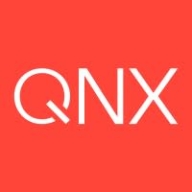

Ubuntu Linux and QNX Neutrino are competing in the software environment category. Ubuntu Linux tends to have the upper hand in flexibility and adaptability, whereas QNX Neutrino is superior for mission-critical, real-time tasks.
Features: Ubuntu Linux offers customization, extensive application support, and strong community resources. QNX Neutrino provides real-time capabilities, fault-tolerance, and predictable operation essential for embedded systems.
Ease of Deployment and Customer Service: Ubuntu Linux benefits from a streamlined package management system and broad documentation. QNX Neutrino offers a specialized deployment process with professional support targeting reliability and safety in embedded applications.
Pricing and ROI: Ubuntu Linux, open-source, eliminates licensing fees and reduces initial costs, making it a budget-friendly option. QNX Neutrino incurs setup costs but ensures substantial ROI through reliability and specialized applications.

| Company Size | Count |
|---|---|
| Small Business | 83 |
| Midsize Enterprise | 20 |
| Large Enterprise | 53 |
QNX Neutrino, a real-time operating system from BlackBerry, delivers robust performance for embedded systems across industries like automotive, aerospace, and telecommunications.
QNX Neutrino is designed for high-performance embedded applications, providing deterministic responses that are essential in systems where timing is critical. Its microkernel architecture ensures maximum security and reliability, making it a trusted choice for developing safety-critical applications. QNX Neutrino's ability to support multitasking and asymmetrical processing adds flexibility, supporting resource utilization across different hardware environments.
What are the key features of QNX Neutrino?
What benefits should users look for in reviews?
In industries like automotive, QNX Neutrino powers complex systems such as Advanced Driver Assistance Systems, ensuring real-time data processing for enhanced safety. In aerospace, it supports flight control systems where reliability and timing precision are crucial. Telecommunications benefit from its scalability and fault resilience, enabling robust network infrastructure.
Ubuntu Linux is an open-source platform known for its robust security, ease of use, and rapid performance. Its lightweight design and comprehensive support system make it ideal for diverse IT environments, providing seamless management and scalability options.
Ubuntu Linux stands out with its open-source nature that allows extensive customization and access to a broad range of free software. It is widely praised for its stability and a vast package repository offering regular updates, enhancing its usefulness across different sectors. The platform is equipped with a lightweight design and excellent community support, making it scalable and easy to manage. While it could improve in areas like Windows software compatibility and user interface refinement, its benefits in enterprise management and development projects are undeniable. Improved documentation, better hardware integration, and enhanced third-party application compatibility are additional focal points to consider.
What are the key features of Ubuntu Linux?
What benefits should be considered from reviews?
Ubuntu Linux is prominently implemented in industries for tasks such as server management, application deployment, and software development. Its resource efficiency and open-source tool compatibility make it a favorite for programming, research, and cybersecurity. Companies frequently use it for web hosting, cloud services, and managing multi-user enterprise solutions.
We monitor all IoT Operating Systems (OS) reviews to prevent fraudulent reviews and keep review quality high. We do not post reviews by company employees or direct competitors. We validate each review for authenticity via cross-reference with LinkedIn, and personal follow-up with the reviewer when necessary.